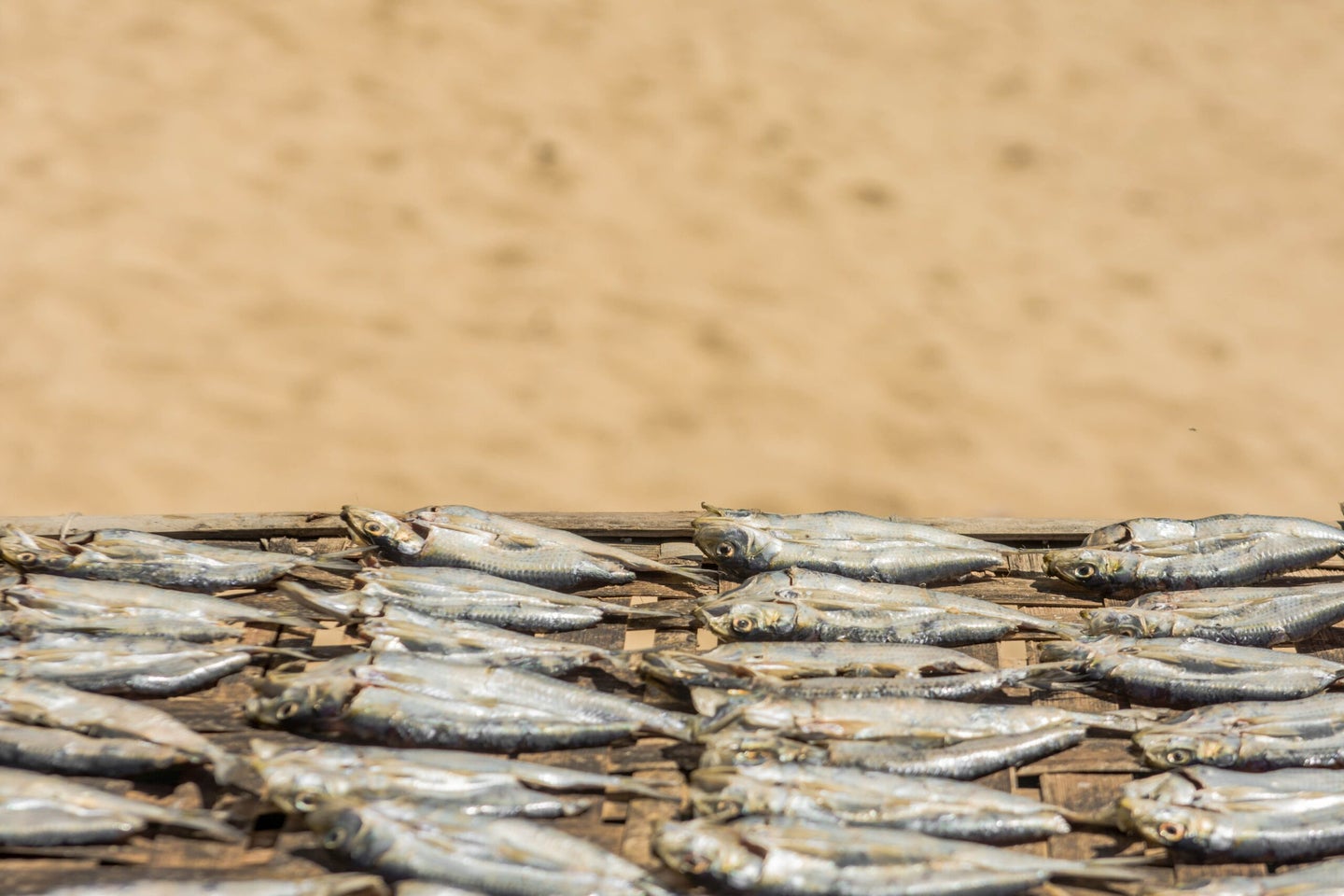Old fish bones could make the eco-friendly plastic we’ve been waiting for
We have a ocean-destroying plastic problem, but fishery waste could help.

Plastics are a scourge in the land and sea and can cause harm to both human and wildlife health, but a more “green” alternative, other than drastically reducing our takeout containers and disposable straws, has been hard to come by. It turns out, the oceans that have felt the pressure from our plastic habit may hold a solution.
Conventional polyurethane, a type of plastic we use for clothes, spray foam, mattresses, and more, is derived from crude oil and a toxic gas called phosgene. But it doesn’t always have to be this way. Research presented Monday at the American Chemical Society meeting by scientists from the Memorial University of Newfoundland in Canada shows they have developed a way to turn fish waste (think heads, bones, and tails) into a material very similar to polyurethane, but free of petroleum-derived oil. This plastic, made of biological materials, could then, in turn, degrade more easily and not add additional microplastics to the environment.
[Related: Post-pandemic seafood could be more sustainable. Here’s how tech is driving the change.]
When thinking about new ways to create bio-derived plastic, Francesca Kerton, a professor of green chemistry at the Memorial University of Newfoundland, was inspired by her surroundings on the coast of Canada. The aquaculture industry in Newfoundland produces over 50 million pounds of salmon alone fit for supermarkets. Still, all of the waste such as heads, tails, and bones typically get tossed out, creating millions of pounds of waste.
“Anywhere from 40 to 60 percent of the landed weight of a fish ends up going into waste,” she says. With potentially 20 percent of that being oil, she says there is “surprisingly a lot of waste fish and waste oil that would be produced around the world.”
Instead of using phosgene, the toxic gas, to make plastics, in this fishier process, scientists first perform a chemical reaction of fish oil with hydrogen peroxide, Kerton says. Then, this substance reacts with carbon dioxide and an amine, which links up the molecules to form a polyurethane-like polymer. This substance can be turned into a stretchy plastic, which down the road could used for products like cling wrap or even medical wound dressing. “It’s fun to try and let our imaginations run wild and bounce ideas off each other of where it could be used,” Kerton says. In their previous iterations of this research, amines derived from cashew nut shells gave the plastic a unique reddish color.
The local aquaculture industry is interested in doing something with their waste material, says Kerton, adding that the fish oil extracted from this kind of waste isn’t high enough quality to be used in fish oil supplements. “Anything we can do to give them another product that they could sell would really help people living in rural communities.”
[Related: The sun can help break down ocean plastic, but there’s a catch.]
Creating plastic derived from biological materials, such as plants and algae, is hardly a new concept. Vegetable and soybean oil can also create bioplastics, but this fish oil-based plastic can exploit waste that would be destined for the trash instead of growing new crops for plastic, which can often be an energy-intensive process.
Taylor Weiss, an assistant professor in the environmental and resource management program at Arizona State University, researches how algae can be turned into bioplastic. Weiss, who was not involved in the fish oil plastic research, says it is a good idea to find ways to use fish waste in areas where it is especially prevalent, such as Newfoundland or Norway. “It’s great basic research; it will absolutely have its application in a certain place in certain markets,” he says.
As we approach a future that uses fewer fossil fuels, Weiss adds, it is important to find biological sources that we can use to make plastic. “The more carbon we pump out of the ground, the more carbon we have to then pull out of the atmosphere. The more carbon that we keep on Earth and reuse on Earth, the easier it’ll be for everything.”
One of the most critical aspects of bioplastics is how fast and well they degrade in the environment, which would hopefully help prevent the addition of even more microplastic to oceans that plague waterways worldwide. “We’re still studying the biodegradation,” she says, so the specifics of how long it takes to degrade are entirely unknown, but when it is put into a “nice wet environment,” microbes start to break it down, which is a good sign for how it would fare in the real world. And in a world where our oceans are rapidly filling up with tiny plastics, finding a double-whammy of reducing waste and replacing the trickier substances we depend on becomes all the more enticing.